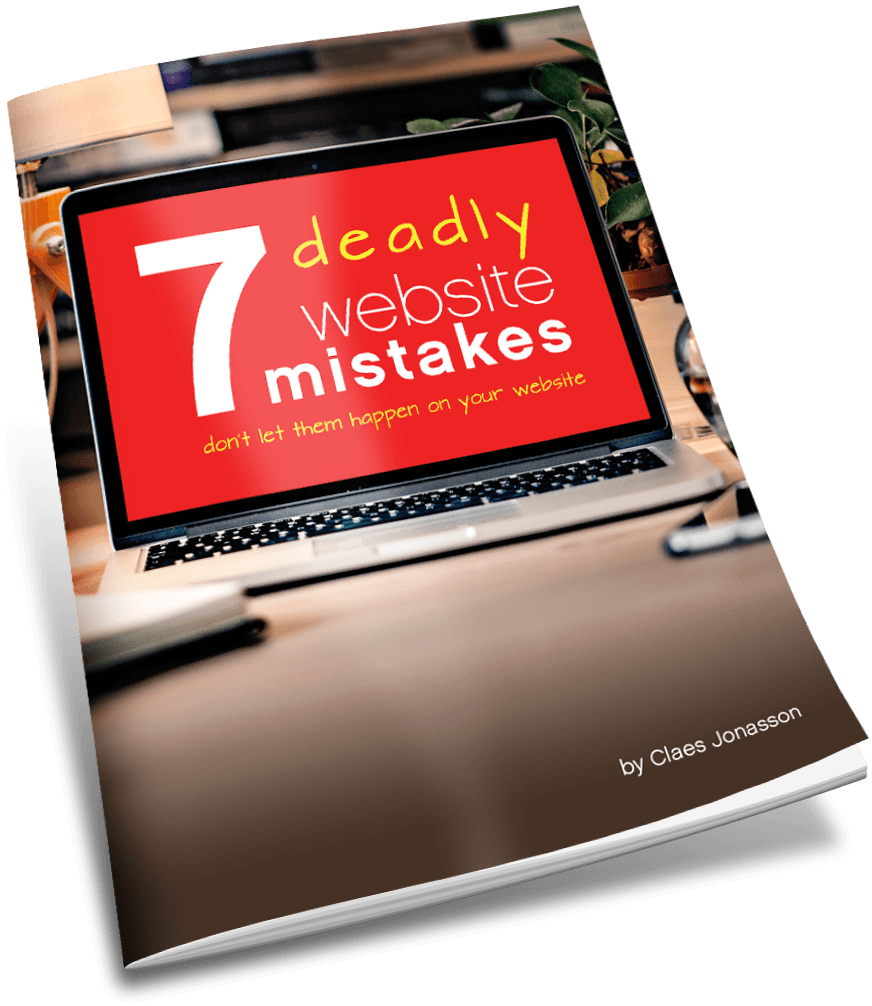I like my website — why change it?
Websites are interesting critters. A good amount of work goes into creating one. Then we launch it and decide we like it. Okay, we know it’s not perfect, but on the whole we like it. So stick with it. Maybe with the intention to tweak it or add more features later.
Then time goes by. Because it does.
Now we’re used to that website.
Monica has a website
I was talking with a small business owner. Let’s call her Monica. Her website is 8 or 10 years old. The business has changed a lot in that time. She’s trying to reflect at least some of that on the website, but finds doing so challenging.
In a large part that’s because web technology has changed massively in the last decade. As I write this, we’re on the cusp of another change as Google moves to only index mobile-friendly websites. Meaning websites that solely exist as a desktop version will be left out in the cold. May totally disappear from searches.
So good reasons to keep our websites’ technology updated. Or to change the website.
Back to Monica: She likes her website and how it works. Because it’s familiar to her. It’s like an old friend and you don’t give up on old friends.
The old family van story
Her situation is similar to what my family went through with the van we had for many years. We purchased it almost new in 2001 (only about 20,000 miles on it).
It was perfect for our family. It had an ideal seating arrangement and lots of cargo space.
We took that van on tons of trips, from the Continental Divide in the Rocky Mountains to the shores of Long Island. And anywhere in-between. In snow, rain, or sunshine, it got us where we needed to go, safely and in comfort.
The odometer kept ticking up higher and higher. But I pretty much wanted to keep that van forever. Because it was so versatile. We could load all our stuff in it. Camping or hauling home improvement things.
As the years went by, our family needs changed and the van got old. Things broke. Eventually the guys at the shop started hinting that maybe it was time we think about replacing the van. With something newer, more reliable. (You can read the story of our old van here.)
When we finally replaced it, the van was 15 years old. In its place, we got a smaller vehicle that better fit our current needs. One that has a host of features the old van didn’t have. Because cars changed massively in all those years.
Actually, for as hard as it was to make the decision to let go of the old van, you really couldn’t pay me to go back now. The old van was great in its prime. But we’d be walking everywhere now if we hadn’t replaced it. Plus the car we have now is just right for us today.
Websites age too and not always with grace
It’s the same way with websites. They’re built for a particular season.
As soon as they’re launched, they start aging. Time passes much faster in the online world though. We can reasonably expect a website to last 3-4 years. Maybe a few more if it was well developed and content is regularly updated. Less if the business changes or the website is left to fend for itself. Read more about the life cycle of many websites.
Same thing with that old van. For several years it just ran. Regular maintenance of course, but no big repair bills. Then something broke. We got it fixed. Then another thing broke and we got it fixed. Before we knew it, at every oil change there was something significant that needed fixing. To the tune of $$$.
At first, you pay the bills. Because gotta keep the vehicle running well. Some repairs weren’t critical and we ignored them. Eventually, the cost of repairs got very similar to a new car payment and about as regular.
With websites, we tend not to directly see the cost of an aging website, one that isn’t aligned with our business, or one that is broken in places.
After all, it’s extremely rare that someone will tell us directly: “I was going to spend money with your business, but then I visited your website and can’t make heads or tails out of it, so now I’m going to somebody else.”
They’ll just go and we’ll never know. So we won’t change the website.
The money you don’t see…
For Monica that’s money she’ll never see. What she does see is the cost of spending money to build a new website. To her that’s a cost, not an investment, unless she becomes convinced that the old website is losing money for the business and a new one will actually help bring in more revenue.
She’s not alone. I asked small business owners and nonprofit managers what they thought the cost was of having a website that didn’t deliver for them or of having no website at all. Surprisingly, almost all of them thought there was either no cost (no lost opportunity) at all or that the cost was very minor (a few hundred $ here and there).
I kind of see how they would make that conclusion. Because many small businesses don’t actually have a shopping cart on the website. Customers don’t directly buy products or services on the website.
Rather the website gives information about the business and the products/services they offer. But any sales are made in person or at least off the website. So in their minds, the website isn’t really part of the sales process.
Except it is.
Did he just check me out?
I got a very vivid illustration of just how much so at a local Meetup a few years ago.
Waiting for the program to start, I was talking with another meeting attendee. Turned out we both worked with web development back when it was all hands-on coding and so compared notes. Then he asked for my card.
The presenter started the meeting. A bit later, I noticed that the man I’d talked with was looking at something on his computer. Okay, people do that. Except, I realized that was my website on his screen.
So he had immediately gone to my website to check me out. People definitely do that!
Apparently he liked what he saw, because eventually that brief encounter led to web design projects. A new client.
Would that have happened if he didn’t resonate with what he saw on my website? Or if I had not had a website. Highly unlikely.
That is a vivid illustration of a major purpose of an aligned website: It helps visitors get to know us, trust us and ultimately like us, so that they decide to become customers.
Will Monica’s website visitors have the same reaction when they check out her aging website? Possibly (likely) not. It’s old and doesn’t reflect her changed business well anymore.
What’s that website worth anyway?
The real question at that point isn’t what is the value of one lost sale. But rather, what is the value of a customer you never get. In business we often talk about the value of a customer over the lifetime of the relationship. Not just that one sale, but additional transactions over multiple years.
Looked at in that light, one lost opportunity is easily far more than the investment in designing and building a website that truly serves your business/organization well.
Which brings us back to my old van. At one point it was just right. A good choice. Then time passed and for a whole host of reasons, it was no longer a good choice. It was actually unreliable and unsafe. But I hesitated to replace it. We often do. Mostly because we’re comfortable with how things are.
Of course, now we have our new car, there’s no question of wishing to be back with the old, broken one. But I did realize one thing: “If we had traded cars sooner, it would have saved us expense and grief.”
The right website will be like that too.
I hope Monica will ultimately come to the same conclusion about her website. Because she and her business deserve much better than a 10-year old website almost held together with duct tape.
When she does jump, she will find that the new website virtually pays for itself by helping bring in new business and opportunities.
Never miss out!
Get an email update every time I publish new content. Be the first to know!

